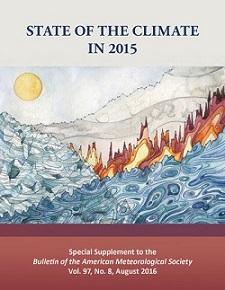 These posts are intended to share information and ideas about climate change and hence act as an open thread. This post has emphasised science, observations and impacts. Comments, about science, observations impacts, and future predictions are welcome. I do not, however, want a rehash of whether human activity causes climate change.
These posts are intended to share information and ideas about climate change and hence act as an open thread. This post has emphasised science, observations and impacts. Comments, about science, observations impacts, and future predictions are welcome. I do not, however, want a rehash of whether human activity causes climate change.
1. SAM and ENSO divorce
Roger Jones at Understanding Climate Risk has a post on global warming breaking the link between SAM and ENSO, with consequences for our weather.
To help, GMT in the graph means ‘global mean temperature’.

With the global warming signal taken out (top panel), the relationship between ENSO and SAM is strong but with it in, they depart in the late 1960s (lower panel).
There’s also an article in The Age.
From Jones:
So what does this mean for Australia’s climate? It means that an overwhelmingly positive SAM is keeping the westerlies south and contributing to our drier autumn winters and delivering weather typical of the Riverina to southern Victoria according to Cai. Recovery of the ozone layer and reduction in greenhouse gas emission would stabilise this process, rather than continuing to send it south.
In summer it also allows the easterly trades greater access, bringing in more moisture from the tropics and enhancing La Niña summer rainfall. Continue reading Climate clippings 79 →



 These posts are intended to share information and ideas about climate change and hence act as an open thread. This post has emphasised science, observations and impacts. Comments, about science, observations impacts, and future predictions are welcome. I do not, however, want a rehash of whether human activity causes climate change.
These posts are intended to share information and ideas about climate change and hence act as an open thread. This post has emphasised science, observations and impacts. Comments, about science, observations impacts, and future predictions are welcome. I do not, however, want a rehash of whether human activity causes climate change.
